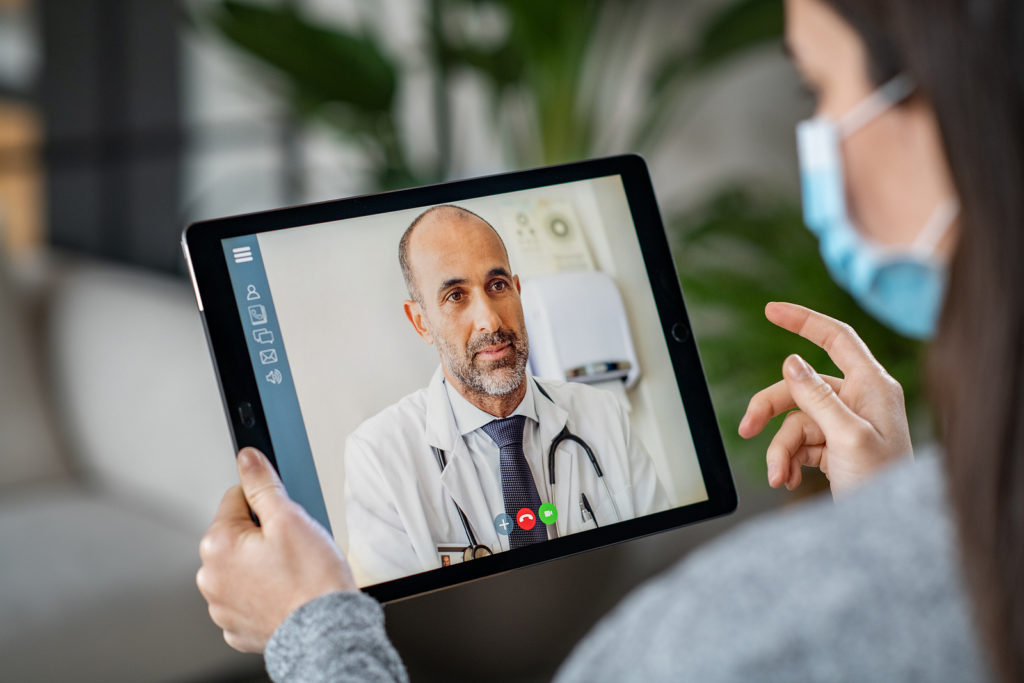
When patients are treated as true partners in their healthcare journey, they are empowered to participate in shared decision making with their providers, make informed decisions about their medical care, and have a greater say in the quality of their day-to-day life.
Evidence consistently shows that supporting patients to be involved in their own care improves outcomes, enhances patient experience, and can reduce healthcare costs. Over the last two decades, health systems have implemented numerous initiatives to achieve this Triple Aim and drive value-based care.
Many of these efforts included employing health IT systems and tools to encourage patients to actively participate in their treatment process. However, when the COVID-19 pandemic hit, many health organizations quickly realized there were gaps in their patient engagement processes.
The COVID-19 effect
The arrival of the COVID-19 virus led to an instantaneous national health crisis. As hospitals prepared their staff and stocked up on personal protective equipment (PPE), they cancelled elective surgeries and transformed units to focus on a potential influx of COVID-19 patients.
Medical practices cancelled or rescheduled non-essential visits and created new check-in and check-out procedures to maintain social distancing. Patients, fearing exposure to the virus, not only put off routine care for chronic conditions, they also delayed care for emergent conditions.
While some providers were able to quickly pivot to keep their patients informed and engaged in their care, many were caught off-guard. A consumer survey done in mid-March, as many areas began encouraging social distancing and issuing shelter-at-home orders, revealed that more than half of the respondents had not received any communication from their providers or payers about COVID-19.
As the pandemic evolves and drags on, it is evident that the world is forever changed. Trust in healthcare was already fragile. It is incumbent on healthcare systems to make an active shift to greater patient-involved care models that project transparency, facilitate communication, and empower patients to ultimately re-build trust and put patients in the driver’s seat.
Filling the Engagement Gaps
Amid this health crisis, patient engagement is more critical than ever. COVID-19 has shed light on the need for digital health solutions that are well-suited to remote delivery of healthcare services.
Necessity drives innovation – with limited in-person engagement, providers and patients are turning to telehealth and other digital platforms that support patient involvement in their care. These solutions are helping fill the knowledge and support gaps for patients.
Providers have the opportunity to evaluate and test key elements of virtual patient engagement through digital communications, data sharing and decision making. Now is the time to reevaluate how to best empower patients to participate in their healthcare at every step of their care journey.
Here are some strategies for digitally engaging patients in their care from pre-care to post-care:
- Give patients the opportunity to experience a streamlined, digital experience from scheduling an appointment to paying their bill
- Use a multi-channel communication approach so patients can choose the format that is best for them, and actively use these channels to keep patients informed
- Prioritize data security that offers robust protection of identity and personal health information when using digital applications
- Offer pre-appointment on-line screening and self-scheduling options
- Consider starting or expanding telehealth visit capabilities
- Incorporate evidence-based patient decision aids that are digitally accessible
- Integrate automated appointment reminders and post-appointment follow-up messages
- Facilitate patient payments by offering contactless payments and more financing options
- Enable patients to provide feedback on their digital experiences
At this point in time, the COVID-19 pandemic appears to be far from over. By taking this time to improve patient engagement processes, you are not only minimizing fallout from the health crisis, you are also preparing your organization to deliver optimal care in the new post-pandemic world.
